About
In Memoriam
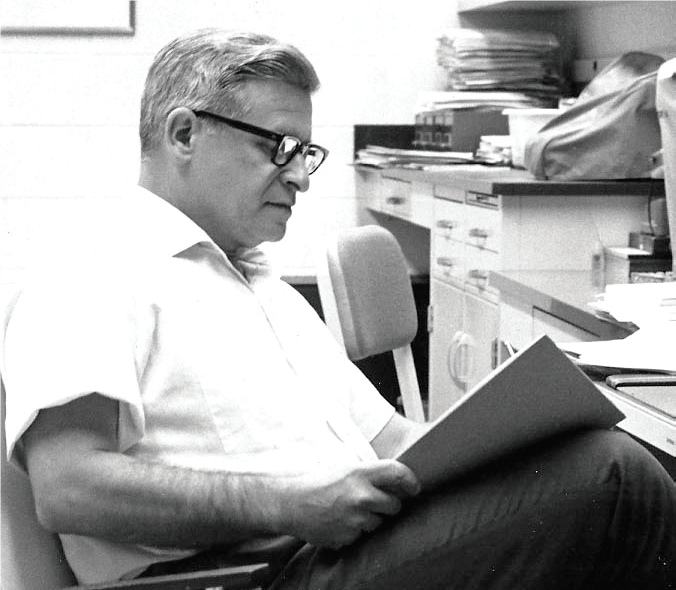
Harold Kalter, PhD.
1924-2019
Dr. Harold Kalter passed away February 21 in Rockville, Maryland, five days before turning 95.
Harold was born February 26, 1924 in the Bronx, New York, son of Samuel Kalter and Rose Kirschner, who had immigrated in their youth from Galicia, Poland and Kishinev, Romania. Sam and Rose had a dairy store which was lost in the Depression, so to continue supporting Harold and his younger sister Norma, Sam became an egg candler. As a boy, one of Harold’s part time jobs was delivering eggs for his father in the early hours before catching the subway to school. He attended DeWitt Clinton High School, and after graduating, enlisted in the army in 1942. He served nearly two years in the signal corps in Algeria, Tunisia, Sicily and Italy, including in the battle of Anzio. Back from overseas in early 1945, Harold was assigned to an army base in New Jersey, but because of damage from the Great Atlantic Hurricane, he was sent instead to the Avon Park Air Base in south Florida.
At the same time, a 23-year-old nurse from Montreal, named Bella Briansky, was visiting her aunt and uncle at their home in Miami Beach. Soldiers in the area were invited to Passover Seders at nearby homes, and there Harold and Bella met, and less than eight months later they married in Montreal. Supported by Bella, who served as head nurse of the outpatient department at Montreal’s Jewish General Hospital, and by the GI Bill, Harold received his B.A. from Sir George Williams College in 1949, and his Ph.D. in Genetics from McGill University in 1953. They had two sons, Eliot and Henry, and in 1955 moved to Cincinnati, Ohio, where their third son John was born.
Harold worked at the Cincinnati Children’s Hospital Research Foundation (CCHRF) from 1955 to 1994 as a Research Associate and Professor in the Department of Pediatrics; and following his retirement was Professor Emeritus in the Department until his passing. During his long career there Harold played a leading role in advancing the discipline of teratology. He authored many books considered classics in the field, including “Teratology of the Central Nervous System,” “A History of Diabetes in Pregnancy” and “Teratology in the Twentieth Century: Congenital Malformations in Humans and how their Environmental Causes were Established.” Among his many other accomplishments, Harold helped pioneer understanding of the interaction of heredity and environment in the production of congenital malformations, first with his 1954 paper based on his Ph.D thesis, titled “The inheritance of susceptibility to the teratogenic action of cortisone in mice,” and with several later publications, including “Experimental production of congenital malformations in strains of inbred mice by maternal treatment with hypervitaminosis A.”
Harold was an early member of the Teratology Society and was selected to be the founding editor of its journal Teratology, now published as Birth Defects Research. He served in this post from 1967 to 1976, providing a firm base for the journal as a periodical of distinction. After retiring from that editorship, Harold founded and edited a series of analytical reviews of lasting relevance and value titled “Issues and Reviews in Teratology” from 1983 until his retirement from the CCHRF in 1994.
In 2011 Bella and Harold moved to Rockville, Maryland to be closer to their sons, but nine months later Bella passed away. Harold continued on his own, occupying his time with family and his never-ending love of reading. He fell and broke his hip in February 2017, and he suffered declining physical health, but his wit, intellectual curiosity, and love of family continued on. In addition to his sons, Harold leaves his daughters-in-law Sandy, Julie, and Eti, seven grandchildren, Ben, David, Mati, Talia, Ella, Adar and Tamar, and one great grandchild, Aya.
Please make any donations in Harold’s honor to the Teratology Society, 11190 Sunrise Valley Drive, Suite 300, Reston, VA 20191, or to Cincinnati Children’s Hospital, P.O. Box 5202, Cincinnati, Ohio 45201-5202.
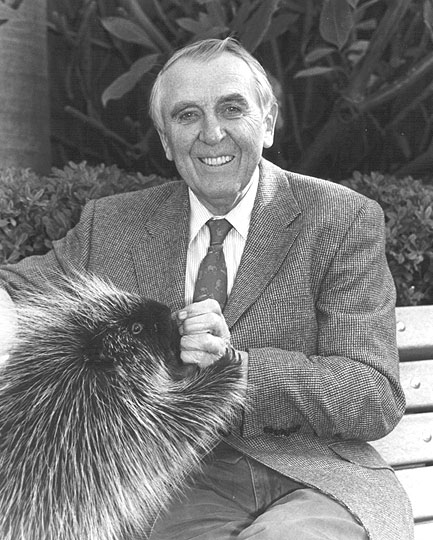
Kurt Benirschke, MD.
1924-2018
Dr. Kurt Benirschke, noted pathologist and animal conservationist, passed away September 10, 2018, at the age of 94.
Benirschke was born in the small northern German town of Glückstadt in 1924. He received his medical degree from the University of Hamburg in 1948 and immigrated to the United States in 1949.
Benirschke received residency training in pathology at Harvard Medical School and, in 1955, became a pathologist at Boston Lying-in Hospital, now part of Brigham and Women’s Hospital. From 1960 to 1970, Benirschke served as chair of the Department of Pathology at Dartmouth Medical School. In 1970, Benirschke joined the faculty of the University of California San Diego School of Medicine. In August of 1970, Benirschke became involved with the San Diego Zoo, lobbying for the creation of a novel “cell bank” to preserve the eggs, sperm and other tissues of endangered species. In 1979, the Zoological Society established CRES, the Center for Research of Endangered Species, which Benirschke led until 1985, when he joined the Zoo’s board of directors. Today, the renamed San Diego Zoo Institute for Conservation Research is the largest of its kind, with more than 10,000 living cell cultures, oocytes, sperm and embryos representing nearly 1,000 taxa, some extinct and many severely endangered.
Benirschke produced more than 500 scientific publications and more than 30 books, including the authoritative text “Pathology of the Human Placenta,” now in its sixth edition. He received numerous honors and awards, including the Virginia Apgar Award in 1998 from the American Academy of Pediatrics. He was a member of many scientific societies, including the American Academy of Arts and Sciences and the Teratology Society.
He is survived by his wife, Marion, and three children: Stephen Benirschke, a surgeon and professor of orthopaedics and sports medicine at University of Washington; former San Diego Charger Rolf Benirschke; and Ingrid Benirschke-Perkins, community relations director for CARTA at UC San Diego.
In lieu of flowers, the family invites donations to San Diego Zoo Institute for Conservation Research at http://institute.sandiegozoo.org/.
For more information: http://www.sandiegouniontribune.com/business/biotech/sd-me-kurt-benirschke-dies-20180913-story.html
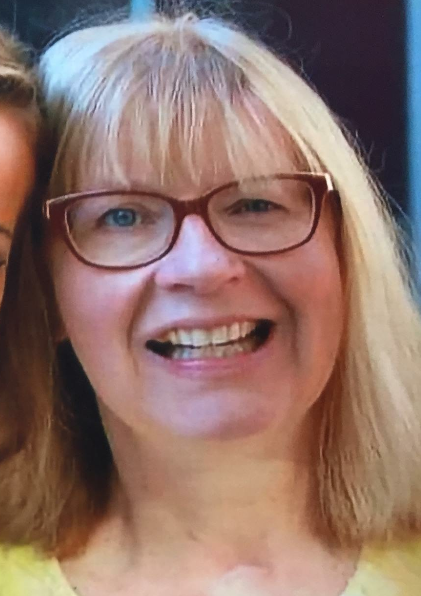
Patricia Mary Bittner, M.S.
1955-2018
Long time Teratology Society member Patte Bittner passed away on April 23, 2018 at age 63 in Herndon, VA. She was predeceased by her parents, Robert & Eleanor Bittner and survived by her loving children, Sascha (Michael) Lawson, Grace (Christopher) Denyer & Andrew Shufelt; grandchildren, Olivia, Kailee, Noah, Ella & Millie; brothers, Bob & Chris Bittner.
While pursuing her Master’s degree in Environmental Toxicology within the Departments of Toxicology and Obstetrics/Gynecology at the University of Rochester, Patte developed her career goals of working to reduce toxic exposures especially related to developmental toxicology. Her thesis was on ethoxyethanol and development. Upon completion of her Master’s degree, Patte took her education and passion to the U.S. Consumer Product Safety Commission (CPSC) in Washington, DC. There Patte was instrumental in resolving the arsenic in outdoor playground equipment issues, and she rose in responsibilities to be one of the key persons responsible for Chinese products, particularly toys and items children use.
Patte joined the Teratology Society in 1998 and was an active contributor, serving on numerous committees and chairing the Public Affairs Committee from 2007 to 2010. She regularly participated in Teratology Society Annual Meetings.
Patte enjoyed sailing, reading, researching, cycling, gardening, traveling, being with her grandchildren and was an animal lover. Injuries from a boating accident resulted in her early retirement from the CPSC.
Contributions may be made to Stroke Comeback Center www.strokecomebackcenter.org in Patte’s memory. For more information and to sign her online guestbook visit www.meesonfamily.com.
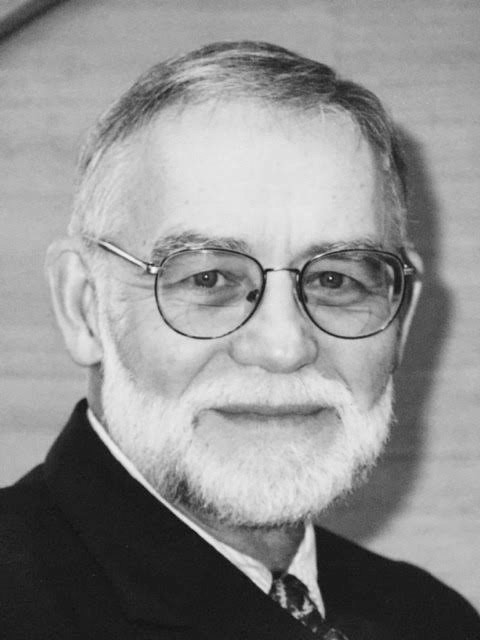
Andrew G. Hendrickx
July 14, 1933–January 7, 2018
Andrew G. Hendrickx—husband, father of five, grandfather of eight and great grandfather of 1 — died in his home on Jan. 7, 2018.
A Davis resident for almost 50 years, he worked committedly at UC Davis as a professor and researcher. He was a loving colleague, and friend to his wife of 22 years, Pam Peterson. His children will miss his devotion and guidance in their lives; they are Peggy Henson, Tami Gonzales, Julie Hendrickx, Sandy Taysi and Thomas Hendrickx. Their mother, Nina Garoyan, of Davis also mourns his loss.
Born July 14, 1933, this Minnesota son (the 10th child of 12) is survived by his brother Lou Hendrickx of Kansas City, Mo., and his sisters Christine Scheidecker of Perham, Minn., Clara Vorgert of Detroit Lakes, Minn., and Nellie Wegscheid of Wadena, Minn.
Andy enjoyed the hard work and camaraderie of growing up on a farm and being educated in a one-room schoolhouse with 12 students (many his siblings!). In high school at New York Mills, Andy excelled in study and sports including baseball, track, football and boxing. He then continued to box in the army and played football at Concordia College where he received his bachelor’s degree. His masters’s and Ph.D. were achieved at Kansas State.
As a professional, Dr. Hendrickx’s accomplishments are notable on a national and international level. He began as head of embryology at the Southwest Foundation for Research and Education in San Antonio, Texas. Upon moving to Davis in 1969, he was affiliated with the UCD School of Veterinary Medicine and worked as a research physiologist at the California Regional Primate Research Center, eventually becoming the Director there for 13 years.
Dr. Hendrickx also taught as professor of human anatomy, at the School of Medicine at UC Davis. He advised for the World Health Organization and the National Institutes of Health and chaired the Scientific Advisory Committee for the State of California. He also served as Secretary and President for the Teratology Society and chaired the department of cell biology and human anatomy at UC Davis. During his career, he produced more than 300 scientific publications.
All who knew Andy these past 12 years will attest to his grace, humor, courage and humility in the face of his disease.
A private service will be held in his memory. In lieu of flowers, gifts can be made to the Alzheimer’s Association and the Humane Society.
Condolences can be sent to Pamela Peterson, 26130 County Rd. 97, Davis, CA 95616.
Source: Davis Enterprise
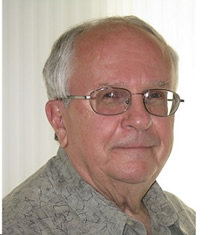
James L. Schardein
April 27, 1934–April 21, 2017
James L. Schardein joined the Teratology Society in 1967. He spent his career with focus as a research scientist, beginning at Parke Davis in Ann Arbor, Michigan, with a specialty in the area of new pharmaceutical drug safety, teratology and toxicology and moving into the drug research industry. Later, he served as an independent consultant on birth defects toxicology for numerous governmental regulatory bodies, law firms, pharmaceutical and chemical companies. James Schardein published five books in his field of study, and his research efforts culminated in the publication of over 120 abstracts, research manuscripts, reviews and book chapters. He was a world-wide expert in his field, lecturing globally.
James Schardein is survived by his wife Mary, three daughters, four grandchildren, and seven great-grandchildren. His obituary may be found here.
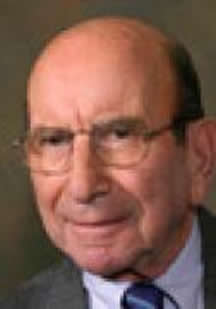
Melvin Malcolm Grumbach, MD
1926–2016
An original member of the Teratology Society, Melvin Malcolm Grumbach, MD, a leading figure in the field of pediatric endocrinology, has died at the age of 90.
Dr. Grumbach conducted pioneering investigations to describe the changes in endocrine physiology from prenatal life through puberty. His work, from bench to bedside, helped advance therapies for a range of pediatric endocrine disorders and engaged contemporary issues related to development and gender.
Dr. Grumbach was a faculty member at the University of California San Francisco for 50 years and served as chair of the Department of Pediatrics for 20 years from 1966 to 1986. He is credited with elevating pediatrics at UCSF, from a small, regional program to one with international renown, during his time as department chair.
In addition to his membership in the Teratology Society, Dr. Grumbach was a member of the National Academy of Sciences, and a fellow of the American Association for the Advancement of Science and the American Academy of Arts and Sciences. His many awards and honors include the Koch Award of the Endocrine Society, the Borden Award for Research of the American Academy of Pediatrics, the John Howland Medal of the American Pediatric Society and the American Academy of Pediatrics Lifetime Achievement Award in Medical Education. He served as president of the American Pediatric Society and the Endocrine Society.
Read Dr. Grumbach’s Obituary published by the University of California San Francisco.
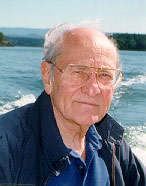
Thomas H. Shepard, MD
1923–2016
A charter member and Past President (1968–1969) of the Teratology Society, Dr. Thomas H. Shepard had a monumental and long-lasting impact on the field of teratology—as a scientist, mentor, teacher, and colleague. He served as a mentor to many of the leaders in the field and his many scientific contributions will continue to play a key role. As an example, the criteria that he developed back in 1994 were recently used as a framework to confirm that Zika virus is a cause of microcephaly and other brain defects.
In 2009, the Society’s journal Birth Defects Research (Part A) published a detailed tribute to Dr. Shepard written by friend and colleague Dr. Alan G. Fantel. Dr. Shepard was a regular participant in Teratology Society’s annual meetings, most recently playing an active role in the 2014 meeting which took place in Bellevue, Washington.
Dr. Shepard’s Obituary, published in the Seattle Times, gives a glimpse into his professional interests and accomplishments as well as his personal pursuits which included sailing and art.
Dr. Shepard is survived by his wife Gretchen and his three daughters, six grandchildren and five great-grandchildren.

Edward J. Lammer, MD
February 26, 1953–February 20, 2016
Published in San Francisco Chronicle from Feb. 25 to Feb. 27, 2016
Dr. Edward Lammer died unexpectedly Saturday a few days before his 63rd birthday. He was born in 1953, the second of six children, to Benedict Lammer, a milkman, and Anne Lammer, a school teacher, in Dubuque, Iowa. An All-State high school basketball player, he received his undergraduate education at Washington University in St. Louis, then studied for his medical degree and completed his residency in pediatrics at the University of Iowa School of Medicine. He was an Epidemic Intelligence Service Officer at the Centers for Disease Control and completed a postdoctoral fellowship at Mass-General Hospital and UCSF.
Dr. Lammer's early career as a medical geneticist focused on an emerging syndrome in which women exposed to the acne drug Accutane gave birth to children with a constellation of severe malformations. He is remembered as a dedicated advocate for the families of affected children. As a Principal Investigator at the UCSF Benioff Children's Hospital Research Institute in Oakland, Dr. Lammer used epidemiological approaches to study the genetic and environmental contributions to common major birth defects, including gene-environment interactions. He had retired a month prior to his passing but was still actively involved in multiple studies. He mentored many future scientists and doctors.
Ed was a devoted father and a loving husband who brought a zeal to a range of passions from trading Grateful Dead tapes to propagating a succulent garden. He was a fearless and exuberant traveler and exposed his kids at an early age to Teotihuacan, back country skiing in the Sierras, and shows at the Fillmore. He maintained a birding life list as he bird-watched on multiple continents and loved to hike in the redwoods of Northern California. He took sabbaticals in Amsterdam, where he explored the city by bike, and in Scotland, where he enjoyed the North Sea in the company of single malt scotch.
Ed's research required an immersion in the complexity of human genetics, but he balanced it with a compassion for the affected families. He found inspiration in evolutionary theory, rationality, psychedelic music, the works of Sir Walter Scott, and rare Brunello vintages. He was a larger than life and unlikely figure in every way; a world-renowned researcher who wore homemade Hawaiian shirts and pink shorts to his lab. He is remembered for his humble demeanor, his non-judgmental attitude towards everyone he encountered, and his mellow charm and quiet warmth.
He is sorely missed by his wife Dibsy Machta of Berkeley, CA, his children Aaron Lammer (Anne Garrett) and Ellie Lammer (Dave Packles), and his five siblings Diane Kutsch (Mike), Richard Lammer, Susie Orr (Tom), Peggy Satterlund (Nels), Pat Lammer (Cheryl), his brother-in-law and sister-in-law Jon Machta and Betsy Brooks, and six nieces and nephews.
His family encourages donations in his name to the Sempervirens Fund.
To read the Teratology Society’s announcement to members about Ed’s passing please click HERE.
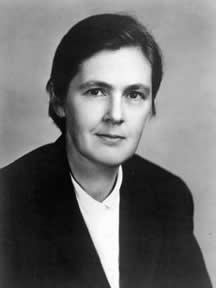
Frances Oldham Kelsey, MD, PhD
July 24, 1914–August 7, 2015
Frances Kelsey, the scientist and doctor, who has died aged 101, became a national heroine for her efforts to keep thalidomide off pharmacy shelves in America; her refusal to approve the morning-sickness drug spared a generation from the catastrophic birth deformities that occurred in other countries around the world.
Dr. Kelsey was just one month into her job with the Food and Drug Administration when, in September 1960, she was asked to review a new drug application for thalidomide, which was usually prescribed as a sedative. Merrell, the Ohio company that had a license for the drug from the German manufacturers Grünenthal, claimed that side-effects in pregnant women were negligible. Dr. Kelsey was unconvinced, however, and put the application on hold.
Over the next 18 months she came under increasing pressure from senior FDA officials, as Merrell lobbied vigorously for the drug’s approval. At one point the pharmaceutical company contacted Dr Kelsey directly to demand that she license thalidomide within 24 hours. She refused. By December 1961, it was clear that her concerns were well-founded. Reports were coming in of newborn babies in Germany and Australia with malformed or missing limbs. When Dr Kelsey pointed this out, however, Merrell’s representative threatened to sue the FDA for libel. The company also distributed more than two million thalidomide tablets to American doctors on an “investigational” basis, as was legal at the time. Consequently, 17 babies were born with deformities. Faced with repeated demands for more data, Merrell finally withdrew its application in March 1962.
The extent of the thalidomide scandal received scant attention until the following July, when The Washington Post broke the story. The public outrage that followed gave the US senator Estes Kefauver the impetus he needed to pass the Kefauver-Harris Drug Amendment, a revolutionary new bill requiring that all manufacturers provide “substantial evidence” of a drug’s safety prior to FDA approval.
On August 7, 1962, President Kennedy presented Frances Kelsey with the President’s Award for Distinguished Federal Civilian Service.
She was born Frances Oldham on Vancouver Island, British Columbia, on July 24, 1914. Her father Frank was a retired British officer; he and his wife Katherine also had two sons, and it was expected that Frances would be educated to the same level. She attended Leinster Preparatory School in Shawnigan Lake as the only female pupil, and studied Zoology at Victoria College before entering McGill University in Montreal to take a degree in Science.
By the time she graduated in 1935 the country was in a depression. Jobs being hard to come by, especially for young women, she took up a residency position with the new pharmacology department at the University of Chicago. The professor who hired her mistook Frances for Francis on her application, and when the acceptance letter arrived addressed to “Mr Oldham” Frances judiciously overlooked the error. She joined the the University of Chicago in 1938.
It was there that she first witnessed the fallout from the irresponsible legislation of new drugs . Manufacturers looking for ways to market the antibacterial drug sulfanilamide dissolved it in toxic diethylene glycol to make swallowing it easier. Coloured pink and mixed with cherry flavouring, “Elixir Sulfanilamide” killed more than 100 people before it was withdrawn. Frances Oldham and her colleagues identified the diethylene glycol as the fatal ingredient; their findings led to the 1938 Federal Food, Drug and Cosmetic Act.
After her marriage, in 1943, to Fremont Ellis Kelsey, Frances completed her medical degree and left Chicago for the University of South Dakota medical school, where her husband had been appointed chairman. After several years in private practice, she moved with Fremont to Washington and took up her job with the FDA. Within a few weeks, the application for thalidomide landed on her desk. “My supervisors decided, 'Well, this is a very easy one. There will be no problems with sleeping pills’ ,” she later recalled. “So that is how I happened to get the application. I never got another one quite like that.”
The Kefauver-Harris Amendments saw the creation of a new investigational drug branch of the FDA, with Dr Kelsey at its head. For the next three decades she monitored drug studies on human and animal subjects, and tracked the activities of review boards set up to protect drug trial participants. In 1995, aged 81, she became deputy for scientific and medical affairs at the FDA’s Centre for Drug Evaluation and Research. Following her retirement, in 2005, the FDA honored her work with the creation of the Dr. Frances O. Kelsey Drug Safety Excellence Award, now presented annually.
Fremont Kelsey died in 1966; the couple had two daughters.
Source: The Telegraph, 10 Aug, 2015
Also see Teratology Society Members Remember Thalidomide Crisis ‘Hero’ Frances Oldham Kelsey, MD, PhD.

David S. Packard, Jr., PhD
July 20, 1944–July 1, 2015
David S. Packard, Jr. Ph.D., of Baldwinsville, NY, died peacefully in his sleep July 1, 2015. His kind, generous, and brave spirit touched the lives of hundreds, especially his family. He leaves his wife and devoted caretaker, Marianne (Laprade) Miles; his children, Melinda Miles, Christopher (Joanna) Miles, and Brett Packard; three grandchildren in whom he delighted—Kaya and Simbi Duplan, and Emily Miles; a sister, Kristen Awrich; brothers, Joel (Regina) and Bob Packard, and many close Packard and Channell family. World wide, future generations will long benefit from the major changes in the treatment of birth defects that have resulted from his scholarly research and career at SUNY Upstate Medical University. His family wishes to express their deepest appreciation to all his medical caregivers, especially Dr. Suzanne Lamanna. (Syracuse Post Standard)
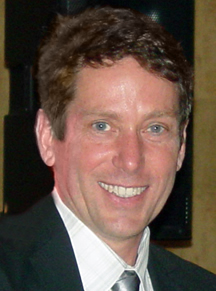
Edward W. Carney, PhD
Edward W. Carney, PhD
Learn about or donate to the Edward W. Carney Trainee Award Fund.
Edward W. Carney, a Past President of the Teratology Society and of the Reproductive and Developmental Toxicology Specialty Section of Society of Toxicology, passed away suddenly on January 12, 2015. He was 55 years old. Ed was a long-time employee of Dow Chemical; at the time of his death he was Scientific Director of Dow’s Toxicology and Environmental Research and Consulting function.
Ed was born on June 14, 1959, on Staten Island, New York, where he grew up. Ed’s youth was highlighted by a love of the outdoors, animals, and music. Ed’s education reflected his interest in animals; he earned a BS in Animal Science at Cornell in 1981, and then working as a veterinary assistant in a clinical practice, followed by a brief stint as a reproductive toxicology/ teratology study director at Sterling Drug in Rensselaer, New York. Ed returned to school, earning an MS at the University of Wisconsin (with Barry Bavister) a PhD at Cornell (with Robert Foote), and a post-doc at the Samuel Lunenfeld Research Institute in Toronto (with Stephen Lye and Janet Rossant). His graduate and post-graduate research was in developmental biology, where he developed new methods for pre-implantation embryo culture in rodents and rabbits, and investigated the genetic control of placental development in mice and humans.
Ed joined Dow in 1992, in Midland, Michigan, where he spent his entire career, rising from an entry-level toxicology position to become the highest ranking toxicologist in the organization. Even though Ed had worked as a study director in toxicology in the pharma industry for a brief period before graduate school, he had considerable trepidation about working in toxicology when almost all of his previous research experience and knowledge base was in very basic developmental biology. He needn’t have worried, as it became quickly apparent to him (and to Dow) that his embryology and animal science skills would prove invaluable in addressing mechanistic questions in developmental toxicology. One of Ed’s first projects was to understand the basis for the developmental toxicity of high doses of ethylene glycol in rodents and rabbits. Ed and colleagues were able to identify the metabolite that was responsible for the developmental effects, and that there were both maternal and direct effects on the embryo that produced the toxicity. The body of research that Ed and his colleagues did on the toxicity, metabolism and pharmacokinetics of ethylene glycol were crucial in dimensioning the risk of real-world exposures to this societally important chemical. Ed was able to apply and expand on his previous research in embryo culture, including successful culture of post-implantation rabbit embryos, a technique he pioneered.
Ed’s research accomplishments included mechanistic studies to explain the toxicity of other important chemicals, as well as the development of improved methods that allowed for improved prediction of developmental toxicity and endocrine activity. More recently, he became heavily involved with novel approaches for rapidly predicting toxicity and founded the Dow Predictive Safety Assessment Center. He, along with others, had become convinced that it was possible to provide not only faster, but better answers about potential human safety issues by applying modern biotechnology, computation, and systems biology thinking to the toxicity assessment for new chemicals. Ed’s CV lists approximately 100 peer-reviewed papers, reviews and book chapters.
Ed was a consummate collaborator and team builder. He was artful in finding people, both inside and outside Dow, who could complement his own skills and produce results that far surpassed what any of the team could have done on his/ her own. He was always gracious in giving credit to others. Although Ed was not in a traditional educational role he was a patient and caring teacher, and unofficially mentored many junior colleagues. He was generous in sharing his knowledge and was sought after as a lecturer. Ed had an adjunct position in the toxicology program at the University of Michigan and was a lecturer in toxicology at the University of Surrey in the UK. Ed was himself a lifelong learner and over the past year had the opportunity to pursue two short sabbaticals, one at the JRC in Ispra, Italy, the other at EPA’s National Center for Computational Toxicology, visits that allowed him to share his vision for predictive toxicology while learning new methods and making new contacts.
Ed had a long record of service to the science of toxicology. In addition to his service as president of the Teratology Society and the Reproductive and Developmental Toxicology Specialty Section of SOT, he was on EPA’s Science Advisory Board and its Board of Scientific Counselors, the Board of the Toxicology Forum, the NTP Board of Scientific Counselors, the ECVAM Science Advisory Board, the Board of Directors of the Hamner Institute, and the Human Toxicology Project Consortium. He was on the Editorial Boards of Toxicological Sciences and Reproductive Toxicology, and was an active reviewer for many more.
Music was also a significant part of Ed’s life. He was an accomplished saxophonist who played professionally in central and northern Michigan, and occasionally in exotic locations like Palm Beach or Philadelphia, when his band was the entertainment for the Teratology Society banquet. He shared his love of music through his volunteer work on the Board of Directors of the Grove Music Festival. He passionately supported musical education through volunteer work with the Dow and Meridian High School jazz bands, ACT-SO, and as founder of Michigan Jazz Trail Jam sessions for local high school students. He took special delight in his children’s musicianship, proudly telling friends, “They all can outplay me now.”
As important as Ed’s scientific career was to him, he would have put it in second place on his list of priorities. His family indisputably came first. Ed met his wife Nancy (nee Hertlein) when they were both undergraduates at Cornell. They were married 30 years at the time of his death. Ed is also survived by his three sons, Alex, Kevin and Philip. Ed was a caring, involved father and loving husband. As his children grew old enough to leave the nest, Ed and Nancy started to take increasingly adventurous trips with their children, and brought back amazing stories about receiving an egg or a pencil as change in Zimbabwe (where hard currency was scarce) or sweating through a hot, mosquito-filled night at a hostel in St. Petersburg, Russia, or attempting to make dinner reservations in Italy, only to find that the restaurant’s proprietor believed that he was asking to bring five dogs to dinner (“Signor Carney” being indistinguishable in his American accent from “cinque cani”) . Ed had a great sense of humor, and delighted in these experiences, and their retelling. He will be missed.
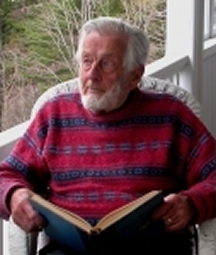
Teratology Society Founding Member F. Clarke Fraser
March 29, 1920–December 17, 2014
Dr. F. Clarke Fraser, PhD, MD, DSc (Acadia), DSc (N.Y. at Potsdam), DSc (McGill), LLD (Dalhousie), Officer of the Order of Canada, Prix du Québec recipient and Canadian Medical Hall of Fame laureate, died peacefully in Digby Nova Scotia on December 17, 2014. Born in the USA to Annie Louise (Clarke) Fraser ("Nan") and Frank Wise Fraser, Clarke grew up in Jamaica but had deep family roots in Nova Scotia. He earned his BSc at Acadia (1940) and his MSc, PhD and MD (1950) at McGill. In 1950, he became Canada's first medical geneticist when he founded the Division of Medical Genetics at the now Montreal Children's Hospital. From 1950 - 1982 he was Director of the Department of Medical Genetics at the Children's Hospital and Professor of Human Genetics at McGill. Following, he was Professor of Clinical Genetics at Memorial University, then in 1985, Professor Emeritus at McGill. In 1999, he moved with his wife Dr. Marilyn Preus to his family home in Bear River, Nova Scotia. A beloved teacher and brilliant researcher, Clarke Fraser was a pioneer in medical genetics, teratology and genetic counseling. He co-authored two textbooks on human and medical genetics and authored a book on the genetics of common familial disorders. He was President of the American Society of Human Genetics, the Teratology Society, and the Canadian College of Medical Geneticists; and headed the working group on genetics and prenatal diagnosis of the Canadian Royal Commission on New Reproductive Technologies. He was appointed an Officer of the Order of Canada in 1985, awarded the Prix du Québec in 1999, received four honorary degrees, and was inducted into the Canadian Medical Hall of Fame in 2012. Clarke is survived by his former wife Beryl (DeBlois) Fraser; his wife Marilyn Preus; children Norah, Noel (Patricia), Alan, and Scott (Tasha); and grandchildren Trevor, Emmett, Megan, Gillian, Masha, Alexander, and Ogden. He was a quiet man with a gentle sense of humour who loved music, athletics, his family, and a scotch before dinner. He played rugger until the age of 40, and tennis until 81. Clarke frequently said how lucky he was, in both his career and his marriage to Marilyn, his beloved wife of 41 years. He was genuinely interested in other people and intensely curious about the natural world. He is deeply loved and will be greatly missed by his extended family, his many colleagues and former students in genetics and teratology, and numerous friends and neighbours. "He tried to be good."
(Published in the Montreal Gazette on Dec. 27, 2014)
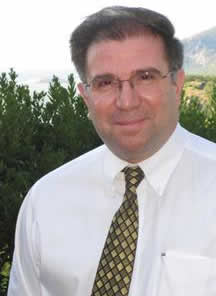
Vincent T. Armenti, MD, PhD
1953–2014
VINCENT THOMAS ARMENTI, MD, PhD, ("Vinnie", "Vince") of Marlton, NJ, passed away on Thursday, September 4th, 2014. He was 61 yrs. of age. Born in Newark, NJ, he grew up in Maplewood, NJ and resided in Marlton since 1988. Most Loving Husband of Dawn (Nee Barboun) and father of Stephen and Kathleen. He was a proud and grateful alumnus of Seton Hall Prep, Rutgers College, Thomas Jefferson University and Jefferson Medical College. He was a gifted transplant surgeon, dedicated educator and medical researcher and a talented musician. He enjoyed celebrating any occasion with his family and the many people he knew and loved, sharing his love of music, spending time at the beach, baseball season and comedy. (www.BradleyStow.com)
(09/08/14)

Offie P. Soldin, PhD, MBA
1952–2014
Offie P. Soldin, PhD, MBA, passed away from lung cancer on February 18, 2014.
Offie was an associate professor in the Departments of Oncology, Medicine, Physiology and Obstetrics and Gynecology. Her research focused on thyroid disease and tobacco control, and she was equally comfortable and effective working with both clinical and population science colleagues. Offie was a committed educator: she directed two graduate courses; co-directed a pharmacology elective for second-year medical students; and taught thyroid cancer genetics, tumor biology and radiation health within the Department of Oncology.
She was a responsible and active participant in civic life and lived generously in service to others. As the president of Georgetown Women in Medicine (GWIM), she started a mentorship program for women associate professors. Offie also served on the university senate steering committee, was the chair of the American Thyroid Association clinical laboratory services committee, and was a member of the Public Affairs Committee of the Teratology Society and the Hedwig van Ameringen Executive Leadership in Academic Medicine (ELAM) Program for Women. In addition, she was an editorial board member for eight journals in several fields, and was a journal review editor for six years.
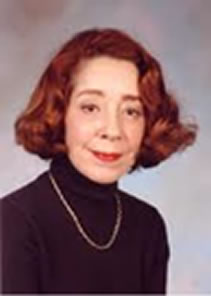
Patricia Rodier, PhD
1944–2012
Patricia Rodier, PhD, the first scientist to formulate and study the idea that autism can originate long before a child is born, died May 3 at Strong Memorial Hospital. She was 68.
An embryologist specializing in the nervous system, Dr. Rodier completely changed the way we think about the development of autism. While many believed that the disorder arose very late in pregnancy or in the early part of an infant's life, Dr. Rodier's research turned that widely held, but unproven, belief upside down. Her work established that genetic and environmental factors can also spur the development of the disorder as early as three weeks into a pregnancy, when the first cells of the nervous system start to develop.
Building on this work, Dr. Rodier went on to identify one of the first genes linked to autism. The gene - HOXA1 - plays a crucial role in early brain development and likely underlies the development of the disorder in some cases.
A professor in the Department of Obstetrics and Gynecology at the University of Rochester Medical Center, Dr. Rodier was also a world expert on mercury toxicity, studying how single exposures to the chemical during pregnancy influence a baby’s brain development. To this day, much of the research being done on mercury exposure and birth defects is based on Dr. Rodier’s early findings.
A testament to her extraordinary expertise in both areas, Dr. Rodier was called to serve as a key government witness for the highly publicized court cases regarding vaccines containing thimerosal, a mercury-containing preservative, playing a key role showing that the preservative and vaccines have no link whatsoever to autism.
While many will recall Dr. Rodier's fiery red hair and distinct sense of style, those closest to her say it was her sweet, warm and gentle personality that made her stand out. "Even when she was critiquing something you did, it was like she was giving you a compliment because she did it so nicely; it would take you a minute to realize what she was actually saying," said Christopher J Stodgell, Ph.D., an associate professor in the Department of Obstetrics and Gynecology who came to the Medical Center to work with Dr. Rodier 16 years ago.
James R. Woods, M.D., the Henry A. Thiede Professor and Chair of the Department of Obstetrics and Gynecology, said, "Patty was the quintessential researcher and a talented writer with an inquisitive mind. Her death is a great loss to the academic world. Our hearts go out to her family."
Dr. Rodier began her career at the Medical Center in 1980. Though her PhD was in psychology, she learned anatomy and embryology as a postdoctoral fellow and went on to teach anatomy at the medical school from the time she arrived through the early 1990's.
"Dr. Rodier taught anatomy to half the physicians in Rochester and was a very accomplished basic scientist whose landmark work in the neurotoxicology of mercury, in addition to the effects of genetics and environment on early brain development in autism, significantly impacted scientific understanding of these disorders," said Susan Hyman, MD, an autism expert at the Medical Center who worked closely with Dr. Rodier. "Dr. Rodier was the recipient of many NIH grants that not only supported her basic science but fostered visionary translational investigations here at the Medical Center and around the world."
Dr. Rodier's research, coupled with advanced clinical work conducted at the Medical Center, brought the autism program national recognition. The program was designated by the National Institutes of Health as one of 10 Collaborative Programs for Excellence in Autism in the United States from 1998 to 2008.
Elaine Francis, PhD, the former national program director for the Environmental Protection Agency and incoming president-elect for the Teratology Society, the major organization focused on birth defects research, education and prevention, added, "When I first joined the Teratology Society, Patty was incredibly nice and always willing to provide advice on my career path. I looked to her as a scientific "big sister." While at EPA, I often cited the research products that came out of an EPA grant to Patty’s lab as a model of how our funding could have a significant impact. She was a great scientist, with incredible composure, and exquisite style."
Following many years studying the effects of mercury and other chemicals on the nervous system, Dr. Rodier turned her focus to autism in 1994 after learning that researchers had discovered a high rate of autism in people who had been exposed to thalidomide in the 1960s; they had been exposed in the first month of gestation, before the time when thalidomide causes limb defects. Some of the autistic children born to mothers who took thalidomide also had misshapen ears, as well as abnormalities in the nerves of the head and face.
Dr. Rodier knew from her work in embryology that facial nerves develop during this time period, sometime between the 20th and the 24th day after conception, thus she wondered if autism might have something to do with the damage to the facial nerves. She then assembled a multidisciplinary team of scientists ranging from molecular biologists, psychologists, geneticists, pharmacologists and pediatricians to tackle the problem by investigating the genetics of autism and developing an animal model of the disorder.
Dr. Rodier grew up in Roanoke, VA., and received her MA and PhD in psychology at the University of Virginia. Aside from her research, she had a passion for travel and art, frequently visiting museums around the world with her husband. She also loved the opera and was an avid sports fan, able to recite statistics on any sport, from professional baseball to NCAA basketball.
Above all, Stodgell said, "Patty was a humanist–she cared deeply about doing what was right for people. There are stacks and stacks of plaques and certificates acknowledging her outstanding work just lying on the floor in her office. While she was happy to be honored for her work, it wasn’t what drove her. She really just wanted to help people."
Dr. Rodier is survived by her husband, Robert Kern, her twin sister, Donna Zahorik, a younger brother, Steven Martin, and two stepchildren, Dr. Jeremy Kern and Dr. Rebecca Kern.
Upon her death, Dr. Rodier wished her body to be donated to the Anatomical Gift Program at the University of Rochester Medical School to further medical education. A memorial to honor and celebrate Dr. Rodier's life will be held this summer at a date to be determined.
The family asks that any donations in Dr. Rodier's honor be made to the Autism Science Foundation.
For more information, contact:
Emily Boynton
(585) 273-1757
[email protected]
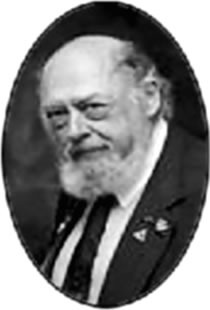
Eugene Victor Perrin, MD
March 7, 1927–May 28, 2011
Eugene Perrin, M.D., professor emeritus of Pathology for the Wayne State University School of Medicine, died May 28. He was 84.
Dr. Perrin began his career with the WSU School of Medicine in 1974 in the Department of Pathology. He was appointed professor of Pathology, and associate professor of Community Medicine, Pediatrics, Obstetrics and Gynecology, and Anatomy. He served as director of Education and Research in Pediatric Pathology for Children’s Hospital of Michigan.
A pioneer in research on the placenta, he published widely in pediatric pathology and teratology. He was a founder of the Society of Pediatric Pathology and a charter member of the Teratology Society.
A longtime member of the Sierra Club, he served as the state chapter’s chairman and received the organization’s Lifetime Achievement Award. He also was involved with numerous other environmental groups, including Friends of the Earth, the Audubon Society and the East Michigan Environmental Action Council.
His commitment to peace and social justice included board membership in the American Civil Liberties Union, the Physicians for Social Responsibility, the Conciliatory Committee for Zionist and Arab Communities, and International Physicians for the Prevention of Nuclear War.
A member of the executive committee of the Wayne State University Center for Peace and Conflict Studies, he received the center’s Founders Award in 2010.
In 1996, the School of Medicine Alumni Association selected Dr. Perrin to receive the Lawrence Weiner Award, which honors the outstanding contributions of non-alumni to the School of Medicine through the exceptional performance of their teaching, research or administrative duties.
A talented pianist and singer, he served numerous faiths and churches as a choir director and vocalist, directed the Gilbert and Sullivan Society of Cincinnati and was choir director of the First Unitarian Universalist Church in Detroit.
Dr. Perrin is survived by partner Linda L. Darga; daughter Miriam Perrin-Nickels, (Douglas), sons Daniel (Suzanne), Adam (Alison) and Joshua (Cherine) Perrin; first wife Jane Perrin, M.D., and six grandchildren.
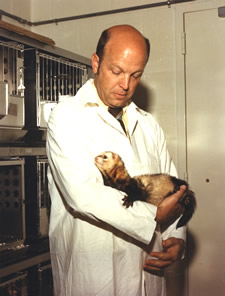
Richard M. Hoar, PhD
1927–2010
The Teratology community was saddened to learn that Dr. Richard M. Hoar passed away suddenly after a heart attack on December 1, 2010. Dr. Hoar was born in Boston, MA and attended Williamstown public schools, Williston Academy, and Dartmouth College. He received his PhD in Anatomy from the University of Kansas Lawrence in 1956. Dr. Hoar was a teacher of embryology, anatomy and teratology and studied neural tube development in guinea pigs at the University of Cincinnati (UC) College of Medicine for several years. He was the consummate teacher, always concerned about his students and their understanding of the subject. Dr. Hoar was the graduate student advisor in the Anatomy Department at UC and shepherded a number of students including myself through the process to a successful completion. His mantra to graduate students about how to give a lecture was “Tell them what you’re going to tell them, tell them, tell them what you’ve told them,” believing that presentation of information in several different ways was the most effective means of transmitting knowledge.
Following his departure from Cincinnati in 1969, Dr. Hoar moved to Hoffman-LaRoche, then to Argus Laboratories, and continued to pursue his love of teaching at the University of Massachusetts Dartmouth, Columbia University College of Physicians and Surgeons, Albany Medical School, and Berkshire Community College. In 1972, Dr. Hoar published a landmark paper in teratology on the development of the renal papilla in rats and its interpretation in developmental toxicity studies (Teratology 6:191-196). He also published important papers on study design, comparative development and toxicology, the use of new animal models (ferret), and studies that addressed critical questions about nutrition, pharmaceuticals, and predictive markers in teratology and toxicology. Dr. Hoar served as President of the Teratology Society in 1979-1980 and as President of the Behavioral Teratology Society (now NBTS) in 1980-81. Dr. Hoar was a member of several national and international scientific organizations and was sought internationally as a consultant and expert witness for his knowledge of embryology, teratology and toxicology until just prior to his death.
Dr. Hoar was also a dedicated community member and leader, serving as Chairman of the Board of Health in several communities where he lived, as well as on various civic and church organizations. He is survived by his wife Rita and son Andrew and family, all of Williamstown, MA.
Carole A. Kimmel, PhD
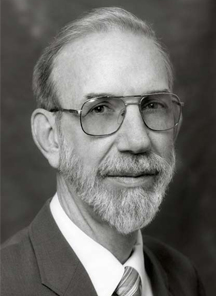
Ronald P. Jensh, PhD
1938–2010
The Jefferson community is saddened by the loss of one of its perennial faculty members. Dr. Jensh was awarded his Doctorate Degree by Jefferson Medical College in 1966 subsequent to earning his B.A. (Phi Beta Kappa) and M.A. degrees from Bucknell University. In 1966 he was appointed Instructor in Anatomy and Research Associate in Radiology at Jefferson Medical College. Dr. Jensh was promoted in 1982 to the rank of Professor in Anatomy. In 1991 he was promoted to the rank of Associate Professor of Pediatrics. He served as the vice chairman of the Anatomy department for ten years until 1994 when the merger occurred between the departments of Anatomy and Pathology. Dr. Jensh served as director of the microscopic anatomy course for first year medical students for many years beginning in 1988. He also co-authored two textbooks on histology. During his tenure at Jefferson he devoted considerable time to service on various standing committees, e.g., Committee on Admissions, Committee on Student Affairs, Committee on Research and Committee on Student Promotions. In 1987 he was appointed chair of the Committee on Curriculum and served in that capacity until 1993. Additional roles in which Dr. Jensh was involved include faculty advisor for the Jefferson Ethical Society, faculty representative to the Executive Council, member of the Medical Scholars Program in conjunction with the University of Delaware and task force member of the Committee on Professionalism. Although he officially retired from Jefferson on January 1, 2004, as Professor Emeritus, he served on the Committee on Admissions until relatively recently.
During his career at Jefferson, Dr. Jensh was a very productive research scientist whose investigations were focused in the field of teratology. This research effort resulted in more than 58 peer reviewed publications and many national and international lecture presentations. He also served for a number of years on the NIH Human Embryology and Development study section. In addition to serving as a manuscript reviewer for several research journals, Dr. Jensh was extremely active in a number of national societies. He was elected President of the Neurobehavioral Society in 1985.
Dr. Jensh was very active in the College of Graduate Studies at Jefferson where he served as thesis director for several doctoral students as well as participating in various graduate training programs and courses. Considerable amounts of his time were also devoted to teaching in the College of Health Professions. Dr. Jensh developed several computer assisted instructional programs which provide ancillary learning tools for our students. Over his career he received several awards for his research and academic achievements. In 1985 Dr Jensh was the recipient of the Distinguished Alumnus Award from the College of Graduate Studies. He was also the recipient of the Lindback Foundation Award for Distinguished Teaching in 1973. Dr. Jensh was honored once again in 1994 with the presentation of his portrait to Jefferson Medical College by the Class of 1994.
In 2004 Dr. Jensh lost his wife, Ruth Ellie, to illness after forty-two years of marriage. Dr. Jensh is survived by his two daughters, Vicki and Libby, their respective spouses and three grandchildren.
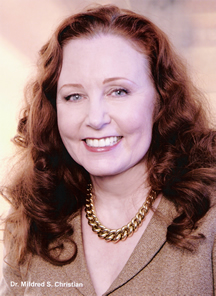
Mildred Stoehr Christian, PhD
1942–2009
Mildred Stoehr Christian, Ph.D., fellow, ATS, peacefully passed from this life on Thursday, March 26, 2009, after battling disseminated breast cancer for over a year. She was only 66 years of age but left us a wonderful legacy of honesty, loyalty, hard work, a compassionate heart and a radiant personality.
She was born and raised in Philadelphia, graduated from Kensington High School for Girls, Penn State University with B.Sc. and MS degrees and from Thomas Jefferson University with a Ph.D. in developmental anatomy. After 14 years with McNeil Laboratories, where she was the first female manager in the research and development division, she founded and became president of Argus Research Laboratories in 1979, Argus International in 1980, the Center for Photobiology at Argus in 1989 and Argus Health Products, LLC in 2003. During these years, Dr. Christian developed courses in multiple areas of toxicology, regulatory affairs and quality assurance, and prepared position papers for chemical and pharmaceutical companies, the U.S. FDA, the U.S. EPA, the U.S. Office of Technology Assessment and the OECD. She also served as an Expert Scientist on the EPA Endocrine Disruptor Methods Validation Sub-committee.
Mildred was an active member of 20 professional organizations, having served on or chaired multiple committees. She is a Past-President of the Teratology Toxicological Sciences; as well as a founding member of the SOT Specialty Section on Reproductive Toxicology. She was the Founding Editor of the International Journal of Toxicology and was its Editor-in-Chief for 10 years. She has edited and/or contributed to several major textbooks and is author of over 110 manuscripts and abstracts published in American and international journals. In academia, Dr. Christian was an Adjunct Associate Professor in the Department of Anatomy and Developmental Biology at Jefferson Medical College, Thomas Jefferson University and an Adjunct Professor in the Department of Pharmacology and Toxicology, at the University of Arkansas for Medical Sciences.
Numerous honors and awards were bestowed on Dr. Christian during her career, including the “Life Services Award” of the American College of Toxicology in 2004; the Alumni of the Year award by Thomas Jefferson University for her contributions to development of the International Conference for Harmonization Guidelines for Toxicity in Reproduction and was awarded an Honorary Membership in the Society for Quality Assurance for her efforts in coordinating the fields of toxicology and quality assurance. Recently she also received a Society of Toxicology award for founding the Reproductive and Developmental Toxicology Specialty Section, and the coveted International Society of Regulatory Toxicology and Pharmacology’s 2008 International Achievement Award.
Mildred’s activities were not limited to science. She was also a fine musician, and her singing, piano and organ playing were greatly appreciated at the Kensington Old Brick Methodist Church in Philadelphia and the First Methodist Church of Franklin, Louisiana. She chaired the Historic Preservation Society of “Old Brick”, was President of its Board of Trustees since 1990 and also functioned as Lay Leader and Choir director. In addition, she and her father founded a Patriotic Sons of America chapter in Franklin, which was instrumental in replacing the historic street lights on Main Street of that town and promoting theater arts.
Mildred was an extraordinary person, who will be sorely missed but long remembered.
Robert M. Diener, D.V.M., fellow, ATS
Alan M. Hoberman, Ph.D, DABT
